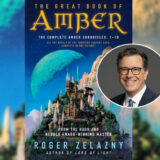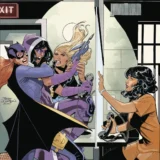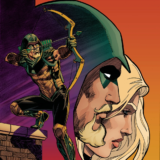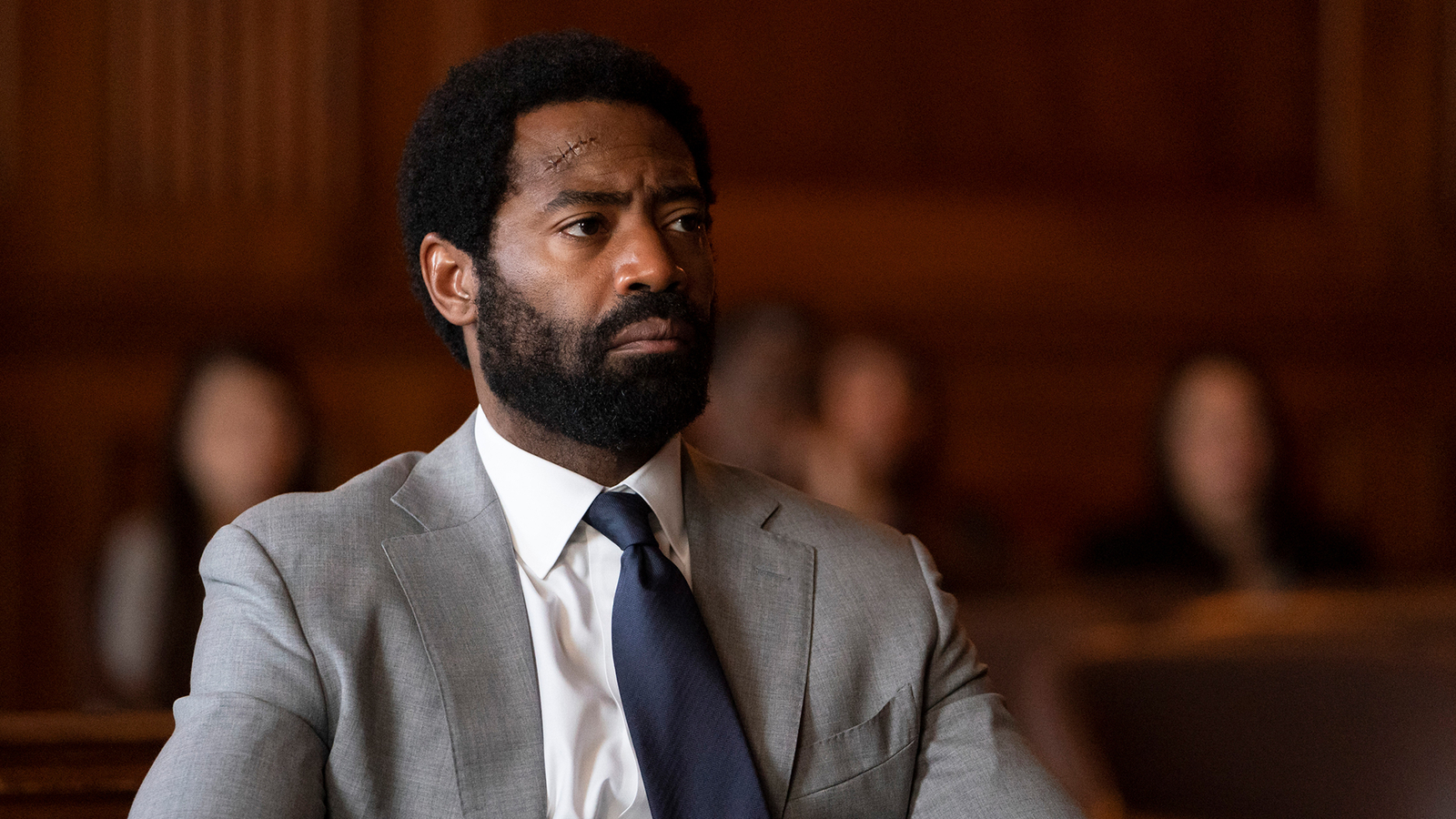Group Review: The Kids Are Alright
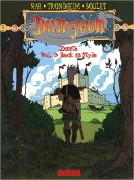
Kids aren’t just short adults; if you spend any time around them, you’ll learn that quickly. (This is also the reason why many people choose not to spend much time around children.) And, similarly, books for children aren’t the same as books for adults, nor are they adult books simplified or dumbed down.
This week, I’ve got five books – parts of three series – all of which are for kids in some way or another. I’ve got two books that are for “all ages” – and I’ll see what that actually means in this case – two that are solidly aimed at tweens, and one that’s for…well, a very particular audience, as far as I can tell, and I’ll get to that.
Written by Joann Sfar and Lewis Trondheim; Art by Boulet
NBM, May 2008, $12.95
Dungeon Monstres, Vol. 2: The Dark Lord![]()
Written by Joann Sfar and Lewis Trondheim; Art by Andreas and Stephane Blanquet
NBM, October 2008, $12.95
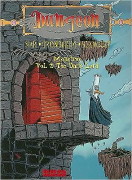
I don’t know how the books of the sprawling [[[Dungeon]]] saga are categorized or considered in their native France, but, over here, they get the not-always-helpful “all ages” label. The librarians I’ve talked to hate that label, since it’s inaccurate – no book is for all ages, and saying so usually means the person categorizing it is too lazy, greedy or ill-informed to make a more solid determination. As far as I can tell, the audience for these books is 10-up, or possibly 12-up if I’m being conservative. (Though I am not a librarian, particularly not a children/teen librarian, and those would be the experts in this case.)
The Dungeon series has proliferated into six subseries by this point – “The Early Years” is self-explanatory, “Zenith” has adventures of the duck Herbert at the height of the dungeon’s powers, “Twilight” tells of the downfall of the dungeon, “Monsters” is “great adventures of secondary characters,” “Parade” is set between the first two volumes of Zenith and has funny stories, and “Bonus” is so far unpublished over here – and I have examples of two of them here. (For further examples, see my reviews of Monstres Vol. 1: The Crying Giant and Zenith, Vol. 1: Duck Heart.)
And both of these are solid pieces of middle, with the humorously bittersweet, almost world-weary tone that’s characteristic of the Dungeon books and of nothing else I know for this audience. (The Dungeon books take place in a world that could have been written by Jack Vance – lots of adventure and jokes, against a dark and unforgiving background that implies an inevitable tragedy.) Back in Style starts with Herbert’s love, Isis, about to marry the dungeon’s Keeper – or supposedly about to do so, since it later becomes apparent that it’s all a plot to trick her father. But plots rarely go well for the heroes of Dungeon, and Herbert and his friends soon are heading for the dubious safety of Craftiwich, the duchy where he would be the heir, if he weren’t under an instant sentence of death if he reappears. And things get even more dangerous and difficult by the end – which is, again, more of a stopping point for a volume than an actual ending; none of the crises have been really resolved.
The [[[Monstres]]] volume, [[[The Dark Lord]]], is deliberately a sidebar to the main Twilight story – which I have to admit that I haven’t read yet – so it’s set many years later. The apparent villain and title character is the Grand Khan, an aged duck who looks very familiar and has a son who is the Duke of Craftiwich, but the hero of the first story is Marvin the Red, a bunny in a full-body powered suit of armor. He’s escorting a village of women to safety when the world stops spinning and breaks into thousands of islets floating in lava – and then he gets sidetracked by a beautiful cat-woman, who is the Grand Khan’s daughter. The second story here is from the Grand Khan’s point of view, and we learn that he’s a prisoner of the Dark Entity within him – until he briefly dies to set it free. And then things get much worse for him, as the various evil minions and forces that he’s been controlling begin to battle with each other and him for control of the pieces of the shattered planet. Again, there’s not a whole lot of ending – and doubly so, since each of these stories is a sidebar to Zenith where, presumably, the main action will take place.
Both of these books have a strong dose of adventure, in their very European fatalistic style. (Knowing what will happen to Herbert later in his life certainly makes his youthful adventures less enthralling.) The art is by various hands, though all in the same vein – Blanquet is the cartooniest and Boulet the most energetic, but they’re all similar to the look established by writer-artists Sfar and Trondheim in the earlier volumes. I wouldn’t suggest starting here, though – the best bet, I think, is to begin at the beginning of [[[Zenith]]] and work out from there.
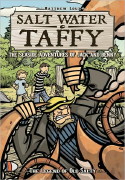
By Matthew Loux
Oni, May 2008, $5.95
Salt Water Taffy: The Seaside Adventures of Jack and Benny, Vol. 2: A Climb up Mt. Barnabus![]()
By Matthew Loux
Oni, October 2008, $5.95
This series of graphic novels, from the cartoonist of [[[Sidescrollers]]] – tells the story of two boys (Jack, eleven, and Benny, eight) spending the summer in Chowder Bay, Maine with their parents. Of course they think the place is going to be dead, and of course they’re wrong. It’s best for kids – boys, in particular – the ages of Jack and Benny, or a bit younger.
In [[[The Legend of Old Salty]]], they come to Chowder Bay and meet a salty old fisherman, Angus O’Neil, who then becomes their expert on the area and source of many tall tales (which have so far turned out to be entirely true). Old Salty herself is a giant lobster, who has been stirring up the regular lobsters (who can all talk) to do her bidding – mostly, in this book, to steal taffy from the general store in town. In the end, the boys have to spread dissention among the regular lobsters, and Angus has to battle Old Salty.
[[[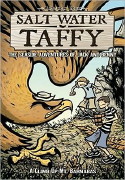 A Climb Up Mt. Barnabas]]] has another giant animal that the boys meet and confront – which I hope doesn’t become the inevitable plot of all of the books in this series – in that giant eagle, Barnabas, who lives on the pointy nearby mountain of the same name. After a hat-related incident, they decide they need to climb up to the top and confront Barnabas, but that’s more difficult than they expected.
A Climb Up Mt. Barnabas]]] has another giant animal that the boys meet and confront – which I hope doesn’t become the inevitable plot of all of the books in this series – in that giant eagle, Barnabas, who lives on the pointy nearby mountain of the same name. After a hat-related incident, they decide they need to climb up to the top and confront Barnabas, but that’s more difficult than they expected.
Loux has an angular art style, with thick but clean black lines and a lot of points – it adds a lot of visual interest to a story that’s, after all, about two boys wandering around a town in Maine. His dialogue is quick and engaging as well – Salt Water Taffy is best for adventurous boys, but it will be fun for many others, particularly those who used to be adventurous boys.
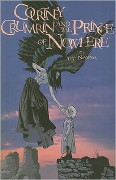
Courtney Crumrin and the Prince of Nowhere![]()
By Ted Naifeh
Oni, December 2008, $5.95
Crumrin is a little Goth girl – or perhaps a Goth icon, since she doesn’t overly manifest Goth trappings herself – with no nose but great magical powers, and she’s wandering the world with her tough but aged Uncle Aloysius for no obvious reason. I came in on this book, and I get the felling I’ve missed a lot of backstory – Courtney is soaking in angst like nobody’s business, for reasons that aren’t clearly explained. Her parents don’t even seem to be dead – just rich and a bit neglectful, which is the standard for rich parents in poor-me stories for teens. (Poor parents, of course, are stifling – demanding that the child live out their dreams so they can have what they always wanted vicariously.)
If you wonder how Goth this book is, here are the first words, from three captions on the first two pages: “This feeling had been Courtney’s constant companion for as long as she could remember. It came flooding back now, all the worse because for the first time, she could call it by name. Loneliness.” That Goth.
Anyway, pouty little Courtney meets a young man in a castle in Germany – he’s impeccably dressed, with old-fashioned manners, a taste for chess, a thick accent, and complicated hair that flops over his face almost-but-not-quite like a ‘90s manga hero. And he tries to seduce Courtney, in his way – and I bet you can guess what that way is – by talking about how lonely she and he are, and how the world is horrible and parents just don’t understand.
Aloysius – who is a magician (in the flying and tossing energy around sense, as is Courtney, actually) – has to battle Courtney’s boyfriend’s mother (an old acquaintance of his), while she…well, just is there being Goth and depressed and wanting to die, really. Does he save her from the the-book-never-actually-says-the-word-so-I-won’t-either? Well, Courtney is the series character, and nothing is more Goth than to have attempted suicide (even in that roundabout, “take me” way, so make up your own minds.
Much of this book puzzled me – from Courtney’s lack of a nose, to the unstated backstory, to her insufficiently motivated existential ennui. The art is wonderful, and the story is told very well, but I couldn’t believe in the story, or in Courtney. She’s not as whiny as I would expect, for a girl her age who’s supposed to be as depressed as she is, and her “boyfriend” doesn’t seem mesmerizing enough to ensnare her that much. This story, I have to assume, would be stronger with a knowledge of the earlier books in the series – but, without them, it feels thin and insufficient.
Andrew Wheeler has been a publishing professional for nearly twenty years, with a long stint as a Senior Editor at the Science Fiction Book Club and a current position at John Wiley & Sons. He¹s been reading comics for longer than he cares to mention, and maintains a personal, mostly book-oriented blog at antickmusings.blogspot.com.
Publishers who would like to submit books for review should contact ComicMix through the usual channels or email Andrew Wheeler directly at acwheele (at) optonline (dot) net.



